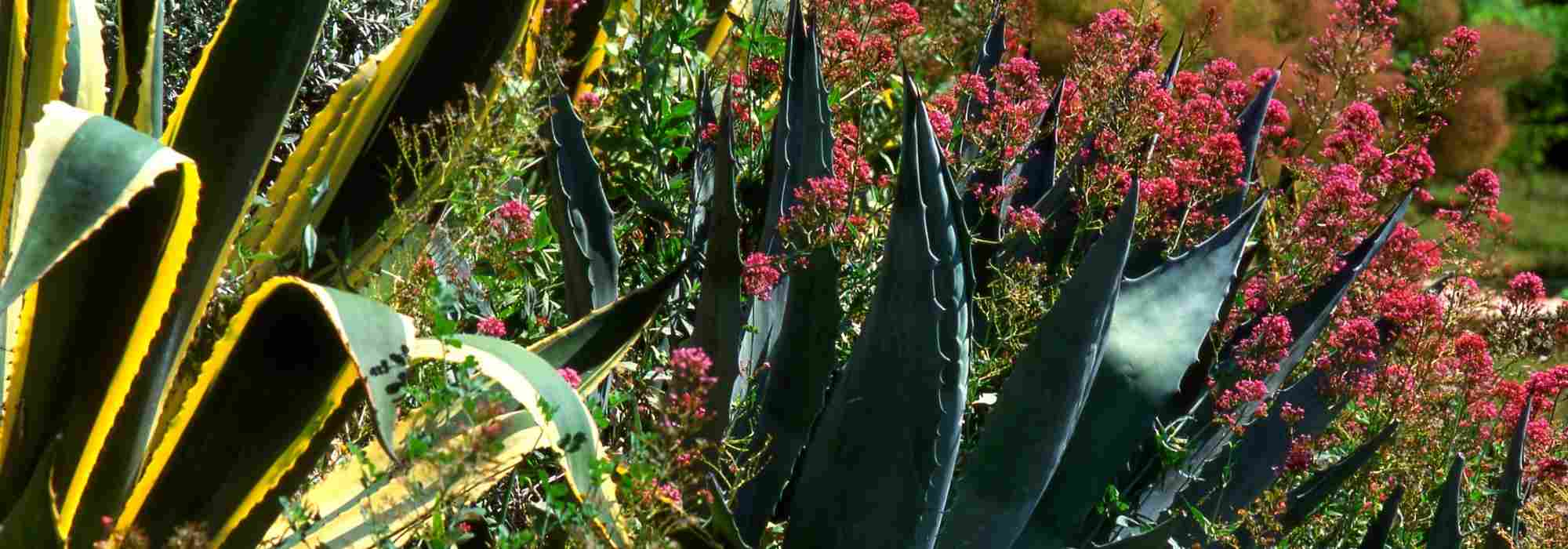
Combining Agave
5 inspiration ideas!
Contents
You can enjoy Agaves to create an exotic, minimalist, or mineral décor. With their spiky, graphic leaves arranged in succulent rosettes and often oversized dimensions, they possess a spectacular architectural presence! Agaves always bring character and grandeur to a décor, whether in exotic-inspired gardens, contemporary settings, or Mediterranean landscapes.
Adapted to semi-desert climates, they thrive in sunny, well-drained, poor soils and are perfect for arid situations, slopes, rock gardens, and causses… While they often stand alone due to their unique character, they also pair well with all sorts of equally undemanding exotic-looking plants.
Discover how to create beautiful combinations with agaves and compose scenes inspired by deserts!
To learn everything, check out our complete guide: “Agave: to plant, to grow, and to maintain”
To structure an exotic bed
With their fleshy, dentate leaves and sometimes monumental silhouette, Agaves always create an important focal point in a garden. The most imposing ones help to structure an exotic bed. They form tall, wide rosettes that can reach over 3 m at ripeness. Thus, Agaves americana, better known as Mexican Agaves or American Agaves, are perfectly suited to create a spectacular centre of interest and structure a bed of perennials or bushes. You will achieve a beautiful exotic bed if you combine them with Prickly Pears, with graphic foliage plants like New Zealand Flax or Phormium, and with some imposing flowers, such as those of Kniphofias, Tulbaghia violacea, and Eucomis. Finally, also consider agapanthes, whose blue hues pair well with the glaucous foliage of agaves. They combine well with the structuring architecture of Chinese Palms and Yuccas rostrata.
Large grasses like Stipas (Stipa gigantea) will soften the prickly personality of the agaves.
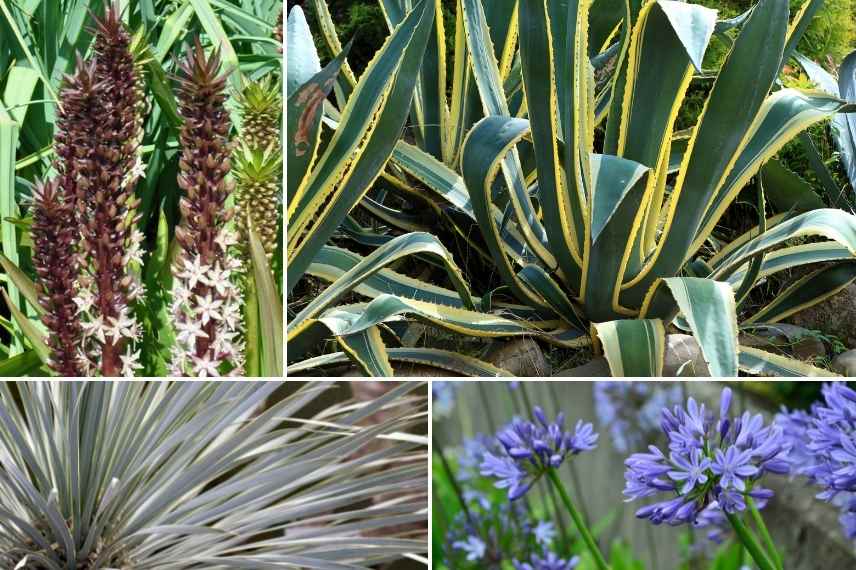
Agave americana in an exotic bed with Eucomis ‘Sparkling Burgundy’, a Yucca rostrata, and blue Agapanthes
Read also
Agave: planting, growing, and caring forOn a dry bank
These plants can be grown easily in the ground on sloping, rocky, well-drained terrain. Very graphic, they will bring a lot of originality to large arid banks, scorched by the sun. You can combine Agave parryi var. huachucensis , which forms a bluish rosette averaging 75 cm, or the very hardy Agave havardiana, with the Royal Protea, the Giant Fennel, the Vatricania guentheri or Candle Cactus, or with the Yucca ‘Ivory Tower’.
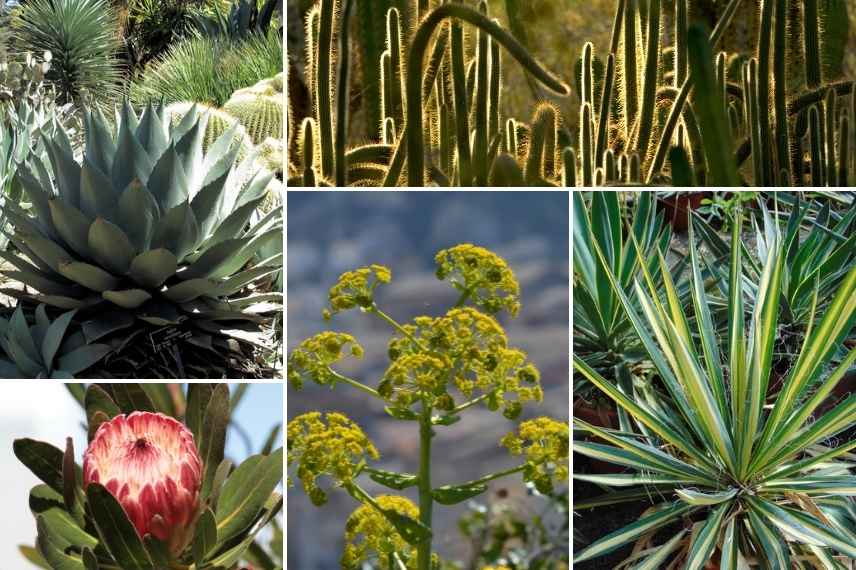
Agave havardiana (© Megan Hansen), Candle Cactus, Protea, Giant Fennel and Yucca ‘Bright Star’,
Discover other Agave
View all →Available in 2 sizes
Available in 1 sizes
Available in 1 sizes
Available in 2 sizes
Available in 2 sizes
Available in 2 sizes
Available in 0 sizes
Available in 1 sizes
Available in 1 sizes
Available in 1 sizes
In a large rockery
Agaves look stunning in a large rockery, alongside other agaves such as Agave montana, Agave geminiflora or Agave filifera, as well as other exotic-looking succulents like prickly pears (Opuntia alta or Prickly Pear), hardy candle cacti (Cleistocactus strausii, Cylindropuntia imbricata), and Aloes. Install Canary Vipers that are equally undemanding. Plant drought-tolerant ground cover plants at their feet, such as evening primroses, Osteospermums, dwarf wormwoods, Cerastostigma plumbaginoides, and Delosperma cooperi.
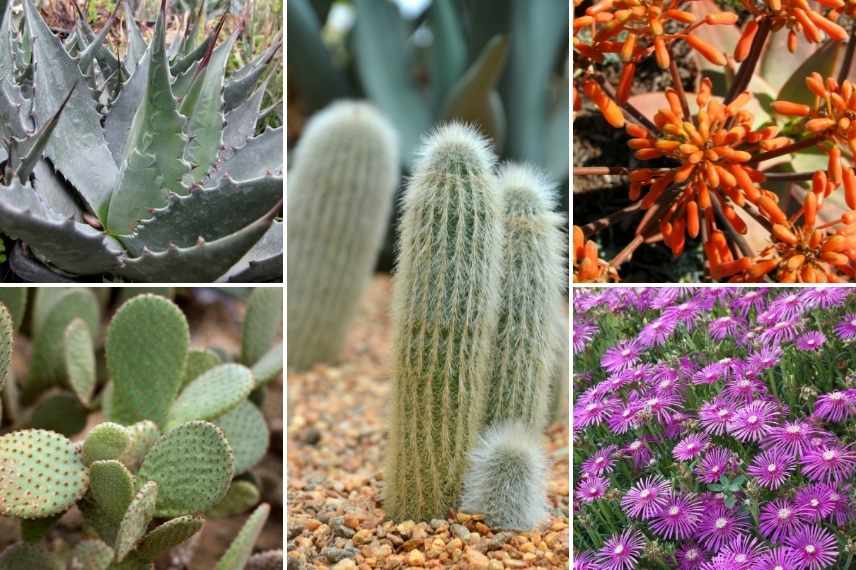
Agave montana, Opuntia, Cleistocactus strausii, Aloes striata, and mats of Delospermas
Read also
Agaves: the hardiest varietiesAs a focal point in a dry or mineral garden
In a contemporary garden, agaves are undoubtedly the centrepieces for a grand exotic rockery. A great way to highlight the agaves is to place a mineral mulch at their base. They will stand out in a very minimalist setting, on a sea of gravel, white pebbles, or even pouzzolane, for example. Install alongside them a Cylindropuntia imbricata, a Puya, Yuccas, Phormiums, and other Dasylirions, as well as small creeping and hardy opuntias like Opuntia humifusa ‘Millevaches’.
Accent the scene with a few wild grasses such as Stipa ichu. Also consider the Nolinas hibernica, a type of yucca native, like them, to the high mountains of Mexico.
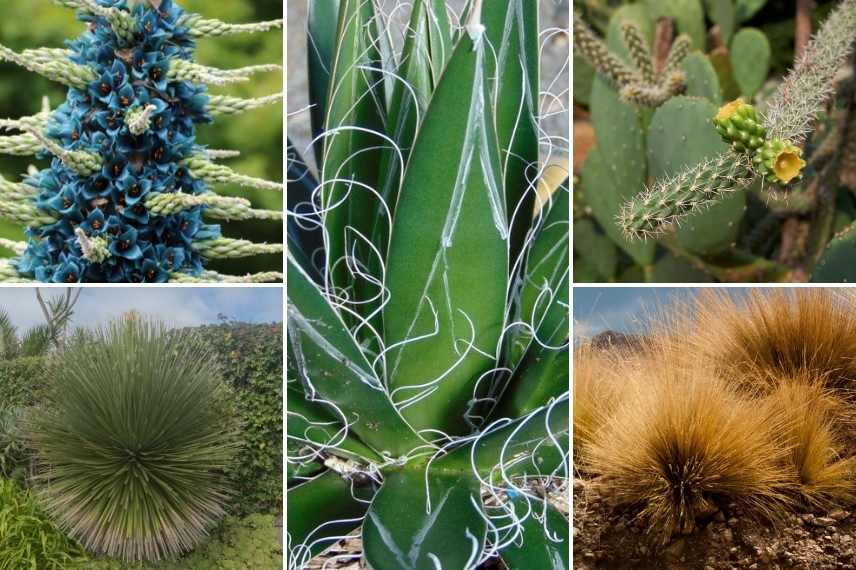
Agave filifera in the centre, accompanied in a mineral garden by Puyas, Dasylirions, Cylindropuntia imbricata, and Stipa ichu
In a seaside garden
Dotated with foliage that withstands sea spray and somewhat frost-sensitive, agave is a succulent well-suited to Mediterranean or Breton climates and easily establishes itself in a temperate seaside garden. In mild climates, they set the tone for decidedly exotic scenes, where they will enjoy the company of Chinese palms, Cordyline, Yuccas filamentosa, and Yucca gloriosa, a Eucalyptus gunnii, and agapanthus.
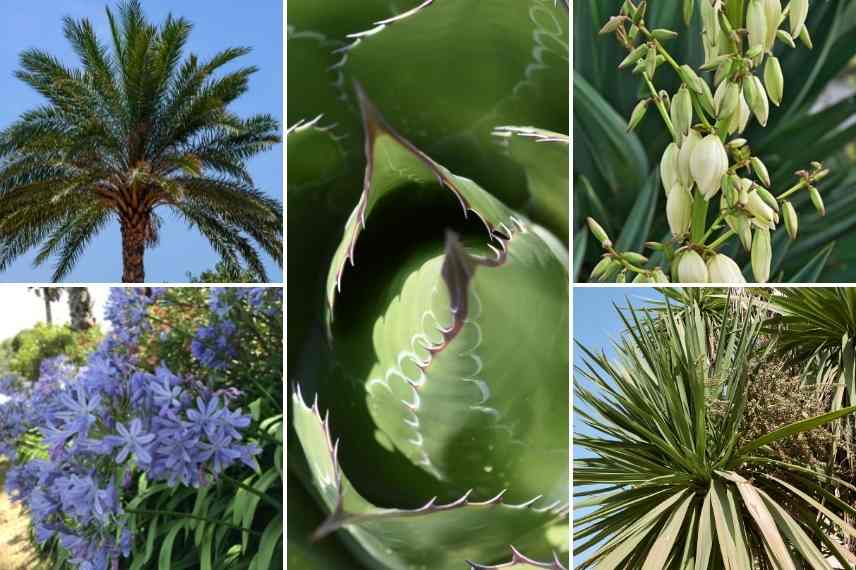
Trachycarpus fortunei, Agapanthus, Agave montana in the centre, Yucca gloriosa, and Cordyline Australis
- Subscribe!
- Contents
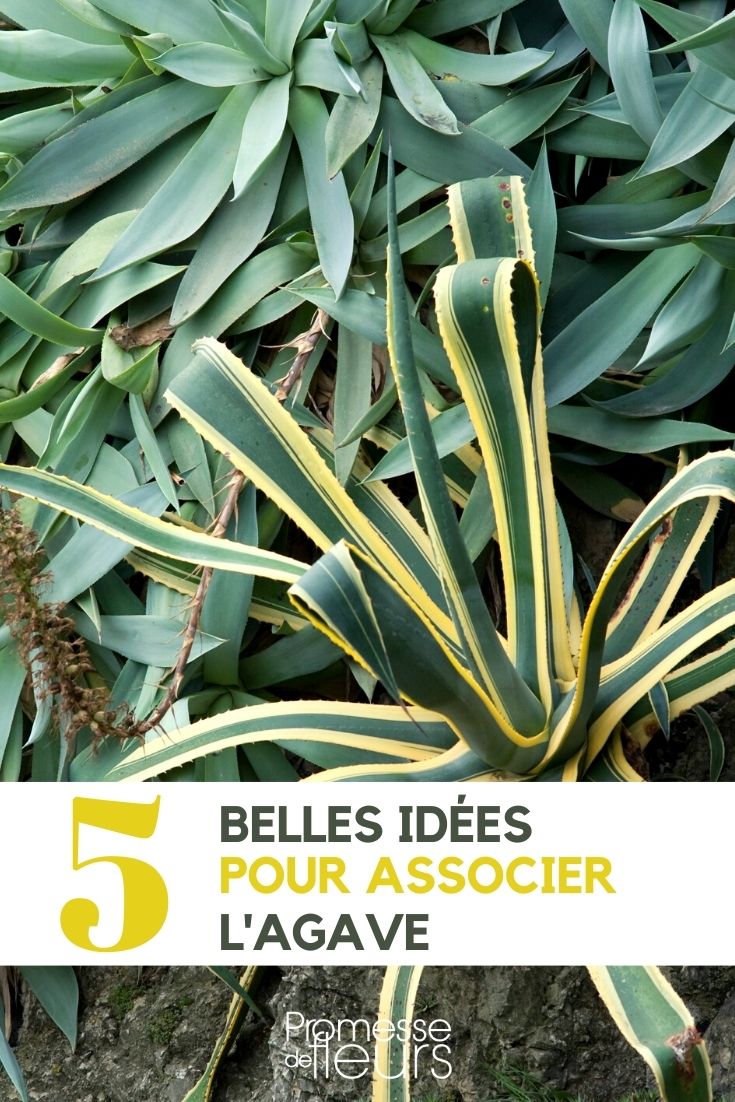































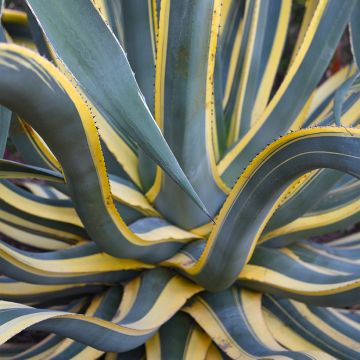
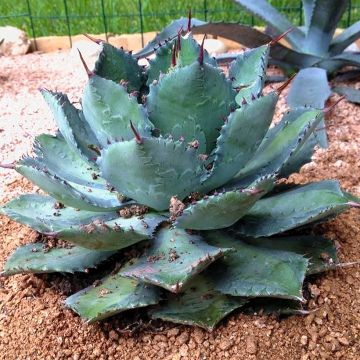
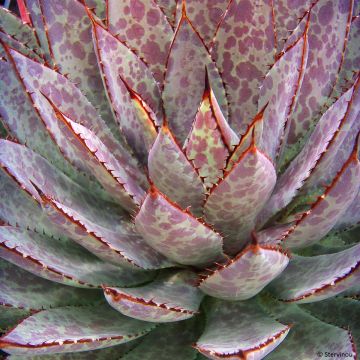
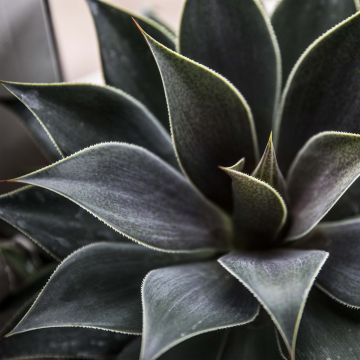
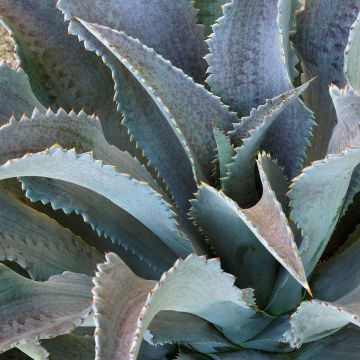
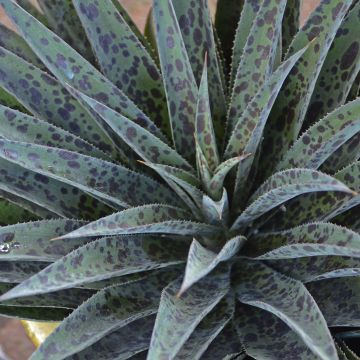
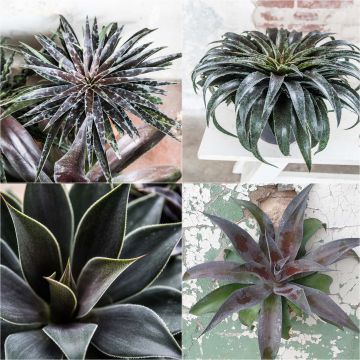
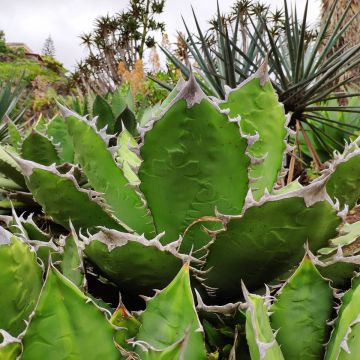
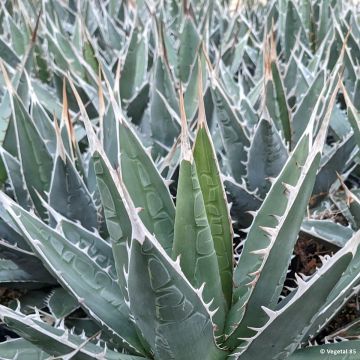
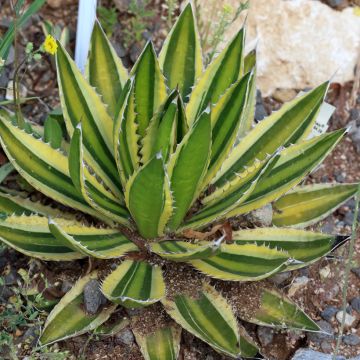
Comments